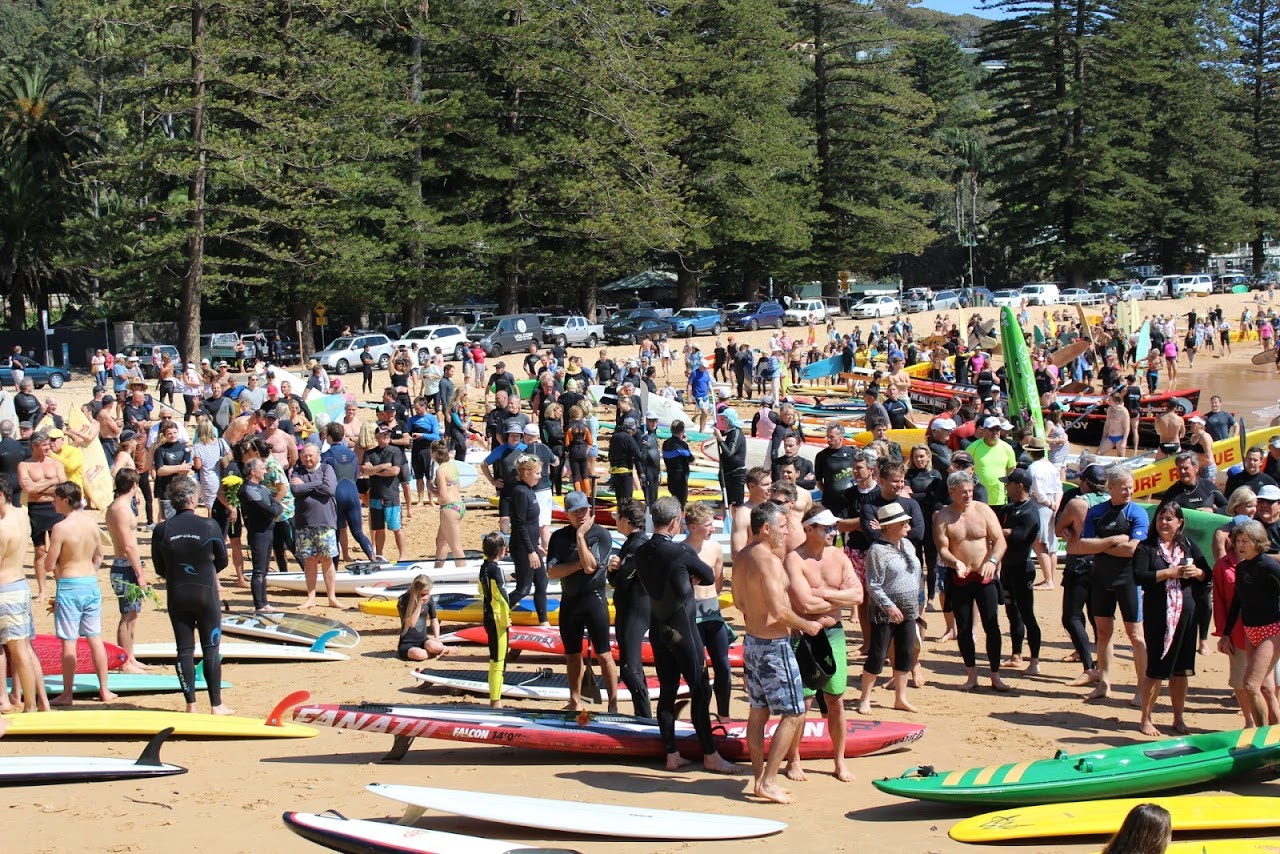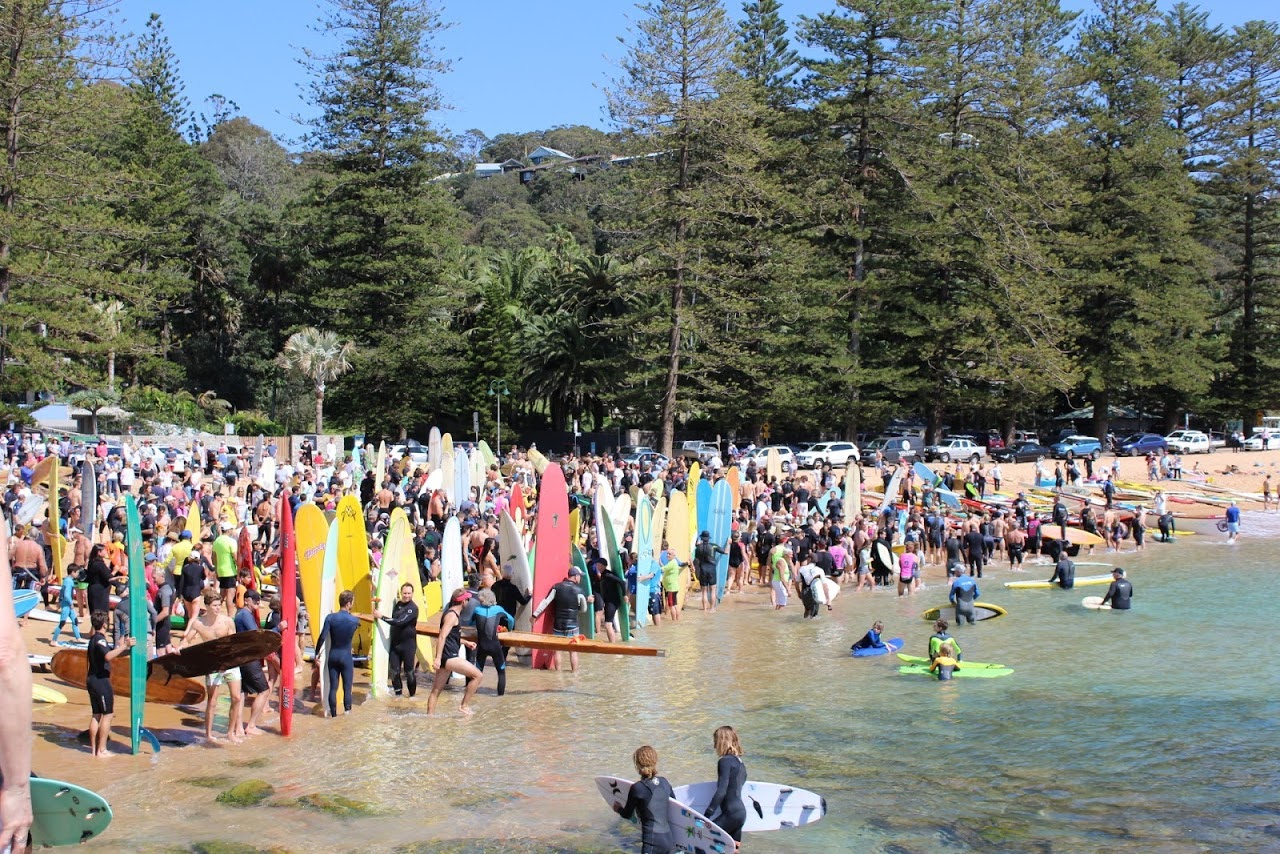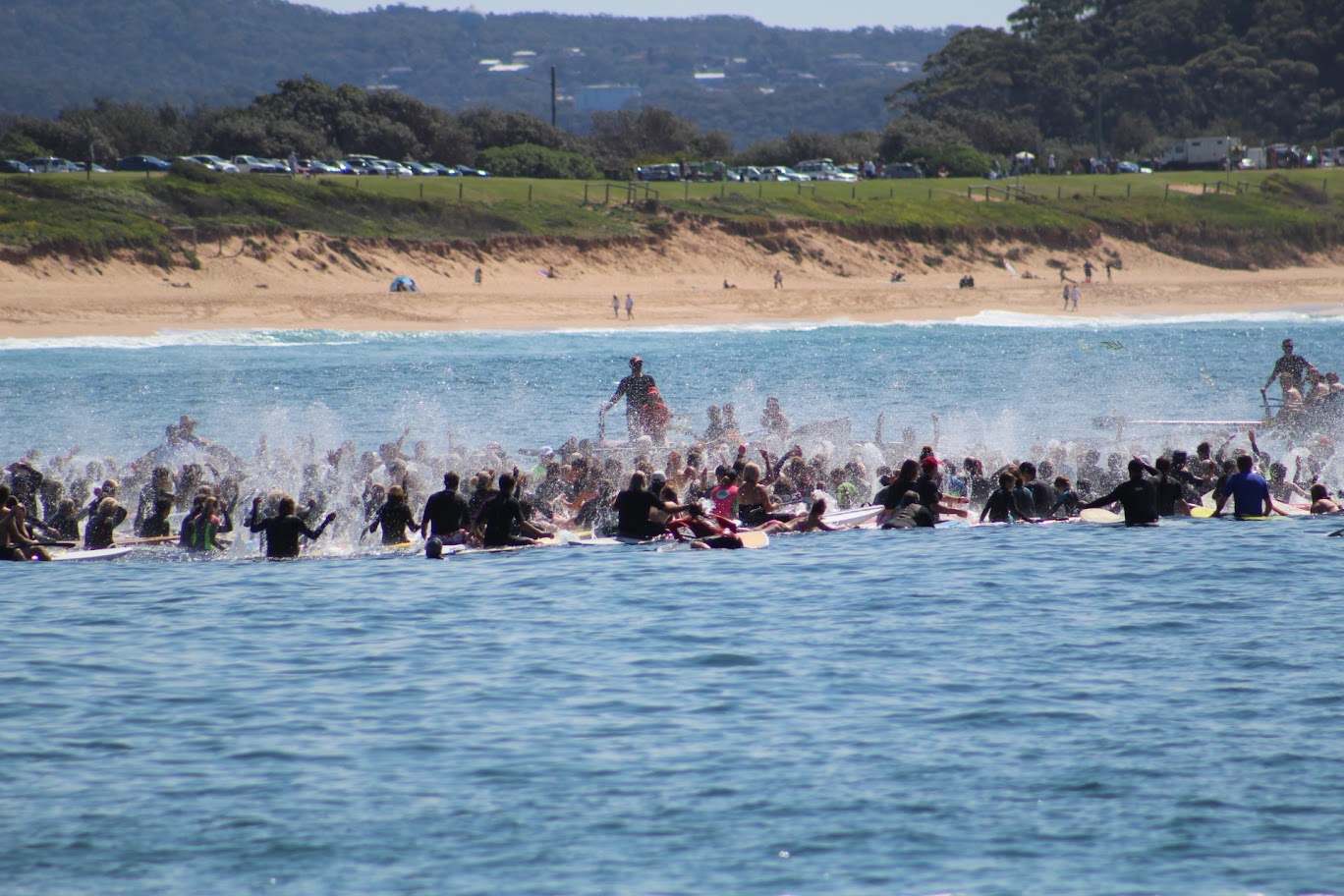July 17 - 23, 2022: Issue 546
Midget Farrelly Recognition Committee
Supported by World Champions such as Kelly Slater, Barton Lynch, Layne Beachley and Tom Carroll, the Committee led by Bruce Raymond, Gordon Lang, Christine Hopton OAM and Nick Carroll aims to raise funds in order to install a memorial statue of Midget at Palm Beach, his home break of six decades. A fundraising campaign has been launched, with donations over $1000 able to be made via the Manly Art Gallery, which provides a full tax deduction.
That fundraising page is here: www.gofundme.com/f/midget-farrelly-recognition
Although Midget may have avoided such recognitions, he was also a man who was always forthright and honest, generous with sharing his knowledge of the ocean, and took an outspoken stance against substance abuse creeping into the sport he opened up for Australians, advocating for the health benefits of surfing and the great outdoors, an attitude that persists as part of his legacy for succeeding generations.
''It seems to me that it would be crazy to forfeit your life or any part of your health for dope as against what I think is a good day of surfing.'' Farrelly said in his 1971 Tracks interview with John Witzig
Midget recognised the difference between surfing as an individual, 'free surfing' and the surfing you do in a contest. An awareness of being in sync with the ocean grew through a lifetime of finding that less crowded break - after all, he commenced surfing when there were not so many surfers out on the waves because there simply were not that many surfers. In that environment the elements of an individual develop, technique and fundamentals branch over into becoming art and an artform.
He flowed with the wave, did not ride atop it.
His cutback must be one of the most photographed instances of grace in the history of the sport of surfing, a grace that persisted into his grandfather years, although perhaps dispossessed by then of the flourishes the competitor exhibits in contests. His surfing had gone beyond flowing with - he actually had become part of the wave, whichever wave came.
Midget would sit alongside others in the pack on a break and have a chat between sets, but he also liked to find that bank where he could surf alone, as an individual exercising his own essence. Watching him on a break just out from Black Rock at Palm Beach in 2015 was like seeing a gentle old master in his favourite church. The quietness, the glide, the peace or smile in his features communicated a reminder that conversation we are all having with Nature, with the elements, with God, with whatever and whomever you like to call it - we all know every single one of us is having that private personal conversation, that inexpressible direct to the core spirit evolving over a lifetime series of revelations that's always available to connect us irrefutably to joy.
Midget did this every day of his life - without uttering a word - but just by doing what he loved doing, bearing witness, and being witnessed. He was persistent evidence of what it's really all about., just by being him.
However, his wins in Makaha in 1963, then considered the 'World Championship', and in 1964 at Manly at the First World Championships, galvanised Australians young and older. There can be no doubt he opened surfing as a sport and surfing as an industry, an industry that has not only granted the same freedom and way to develop your own expression of your self, as a physical exercise, as a resort when needing solace, peace or fun, but also as a business that has put surf clothing on backs, skateboards under feet, and coins in the pockets of thousands raising families - just in this area alone.
All this begs the question - how have we not put something somewhere yet to acknowledge the First World Champion in men's surfing? Why can't the next generation have some reminder of this quiet local trailblazer as one of the examples and guides they can refer to?
We teach our youngsters that in the seed is the flower, fruit or tree that will grow, why not share that in the individual is all the potential they need and all they have to do is flow with, grow with it? Why haven't we acknowledged the First World Champion, placed his classic stance where leis may be strung across his brow or thanks murmured?
To mitigate this glaring oversight is the mission of the Midget Farrelly Recognition Committee.
This week a few insights from two of the founders, Bruce Raymond and Gordon Lang.
Bruce, what does Midget mean to you?
The achievement of what Midget did to me is huge. I think we should recognise that achievement. In some cultures what he has done would not go so under-the-radar as what has happened here, that the first ever World Surfing Champion came from here.
What occurred here started a whole cultural shift and evolvement of a sport embraced by millions all around the world.
Personally what this project means to me, besides the big picture, is when I was about 10 years old Midget won the World Title and that commenced my own interest in the surfing culture. I wouldn’t say I was a great friend of Midget’s, it was more that over the course of decades we crossed paths in a nice way and remained mindful of his influence on the commencement of a surf culture.
This was a significant contribution not only to surfing but to Australian culture, our culture.
I recall that at that time Midget’s achievement was recognised as a big sporting achievement throughout the whole country and actually put surfing in the spotlight. We’ve actually gone backwards from that to a point where surfing is in the background rather than at the forefront of what is achieved and celebrated as part of being Australian.
When the World Titles were held in Manly in 1964 there were 60 thousand people on the beach – I don’t think that has happened since.
It would be remiss of us not to celebrate and place a readily available tribute to the man who gave so much to our local and Australian culture over so many decades – not just for we who were part of that while growing up, but also for those who want to know ‘where does it all come from and who was doing that then’?
Gordon – what is your favourite Midget as part of the Palm Beach SLSC story?
Can I give you two?
Absolutely.
Gordon: the first must have been when my daughter was in kindergarten or year 1, she was looking into Australian history and brought home a book the students had been issued with and there was a photo of Midget in there. She said ‘is that Midget from Palm Beach?’. I took the book down to Midget, without telling her, and got him to sign it – she then took it back to school and all of a sudden she knew someone who was part of Australian history – she was absolutely stoked and it made me feel really good too.
The other thing about Midget that has always stuck with me is he was part of creating and promoting a sport and lifestyle that set many others up for the best things in life. His approach and stance to this lifestyle, along with his surfing – his fluidity on the water, his grace, did not change him – he remained down to earth and straight up.
He was the first World Champion but going surfing with him, you’d just be sitting there waiting for a wave and having a chat. He put time into others – he put time into helping me with my surfing, he put time into my kids. He would put time into young girls wanting to learn to row surfboats, he just always gave to others, even if he did it quietly.
You could be sitting there having a chat with him and there’s nothing on the horizon, and then all of a sudden he’d turn and within two strokes was on the best wave of the day. I’d be sitting there still, thinking ‘where di that come from?’.
He was an innate waterman – I recall Joey Cabell stating he was, “a true waterman and legend” – which for Hawaiians is the best you can say about any surfer and from someone where surfing was born.
When I was around him he always had a happy and supportive approach to everyone – and that’s what I loved. I would have seen him three times or more a week over those last few years. On Friday afternoons if you had nothing on, middle of Winter, he’d get a fire going in the Cabbage Tree Club, get a bottle of wine open and look forward to greeting anyone who came in for a chat.
The image you’re currently using for modelling for this statue – where is that from?
Gordon: This is straight from the finals in the 1964 World Championships at Manly. That’s a classic stance for him, one he is renowned for.
Bruce: that’s from the World Titles and is based on a Jack Eden photo. He had a vest on with the number 3 on it. His vest actually had number 2 during the final.
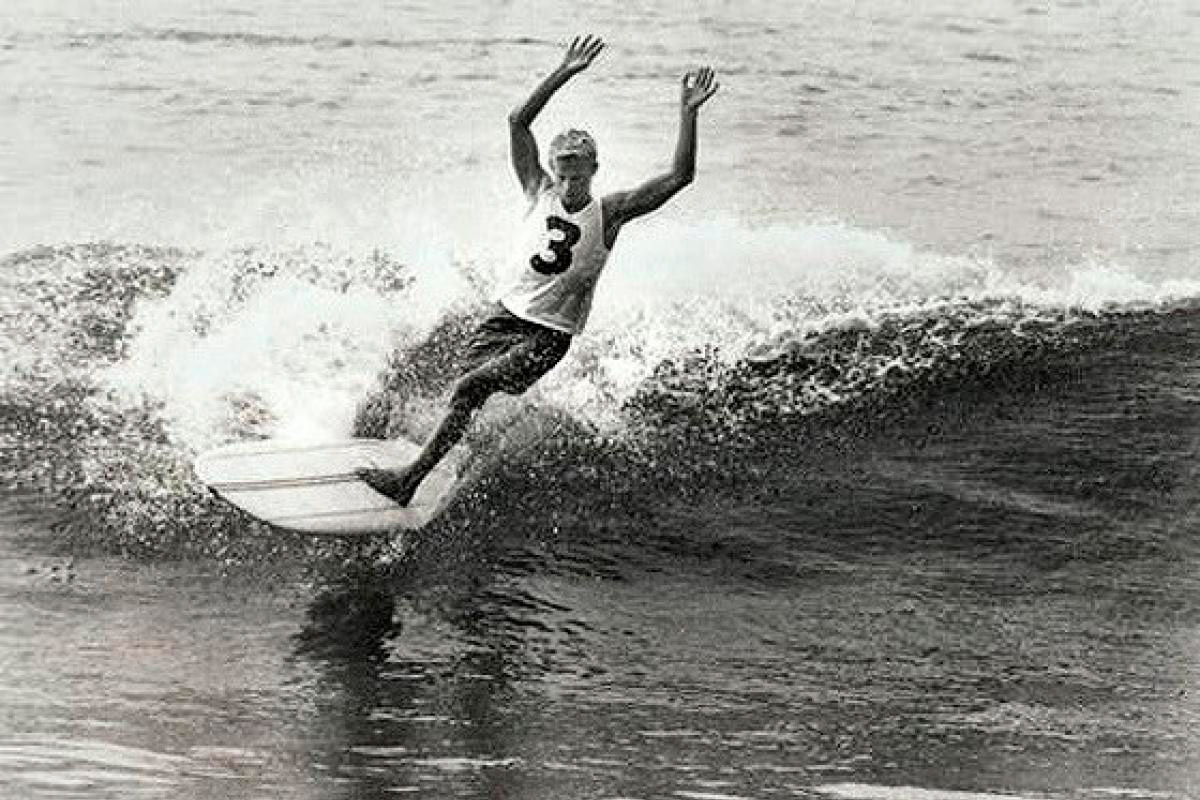
Jack Eden's photo of Midget at Manly World Championships of Surfing in 1964, courtesy Jack and Dawn Eden
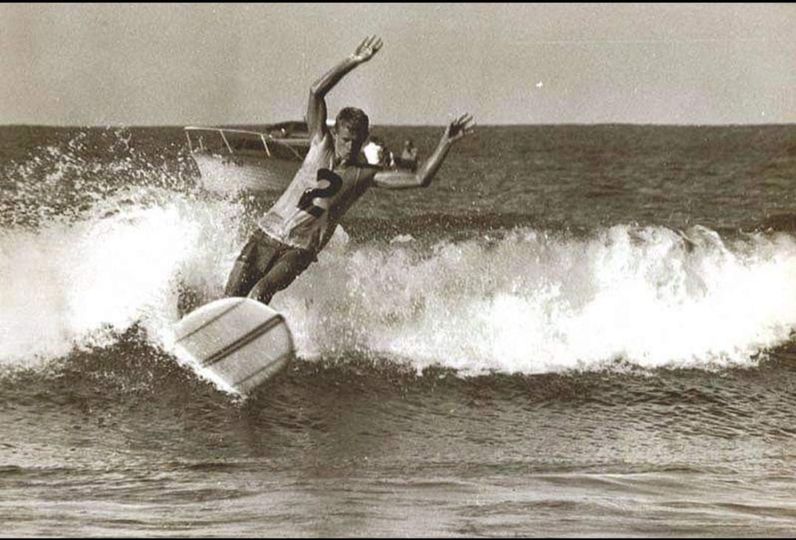
Ron Perrott's photo at Manly World Championships of Surfing in 1964, courtesy Ron Perrott
Gordon: the main reason for using that modelling is that anyone who saw that, without even seeing the original image, would know who it was. From my point of view the aim is to recognise the first World Champion and that image is from that championship. Secondly, that is innately Midget – anyone who knew him or surfed with him would know just by looking that That is Midget. There are not too many surfers that had a unique style like he did, graceful – just so graceful.
Bruce: a thing that was unique to surfing was that the way he surfed in 1964 was the same as what he surfed up until a year before he passed; there wasn’t much difference.
Do you have a site for this statue yet?
Gordon: Palm Beach plaza – straight in front of the 2108 café.
Bruce: near where the bus leaves from.
Kelly Slater paid for the mock-up design for this Midget Tribute – will he be at the unveiling?
Bruce: probably not – he is just so busy and involved in so much all over the world at present. After Gordon he was the first person I spoke to. I said, and bear in mind he has 11 World Titles, ‘Kelly, I don’t think your 11 World Titles are worth as much if the first ever World Surfing Champion isn’t recognised’. He agreed and put in the money for us to be able to get this mock-up design done. His investment into this was actually the first for this project and demonstrates the esteem Midget is held in by so many of the surfers who came after him and who have made a career out of their passion and love for this sport.
Kelly is a really reasonable guy who will listen to everything – he’s a top human. I remember when my wife passed away 2 years ago he came out before she left to spend a week with her and ended up staying for 7 weeks. He played the guitar and sang to her every night.
A while ago I caught Covid and he was texting me; have I done this, have I done that, am I keeping up my fluids – he’s a family friend.
What I said to Kelly I said to all the other World Champions that Gordon and I have got involved in this project. That opening line makes them stop – these champions have to have a good opinion about what they’ve done and know how much they’ve strived to get those results. They have all realised that their achievements are not quite as great if they don’t pay attention to this particular project because if we do not acknowledge where all that came since stems from, it is not as it should be. So they have all wanted to get involved and remedy what could best be described as an oversight until now.
What really got me is, I’ve been a part of the surf culture all my life, and although I’ve made contributions in various ways, it occurred to me one day that we, the broader ‘we’ of everyone who is involved in the surf industry, need to attend to this and get it right. It’s not like it’s a hard sell – everyone gets it and gets that this needs to be done.
Gordon: without being rude; we recognise horses, we recognise cricketers and many others who have contributed, on an Australian stage, what our country is about and what it has achieved through this exceptional individuals achievements. In such instances The First World Champion should be recognised. This could become an icon like The Duke statue in Hawaii or the Kelly statue in Florida – this could attract more people to Palm Beach, his home, so they can connect with what he loved about this place.
Midget was also a straight-up individual as well – no balderdash, no guile - he spoke out against drug taking being part of surfing’s culture quite early on – I recall watching an interview with him from the late 1960’s where he enunciated this as being pretty much the opposite of what the culture of surfing is about and what you can do by looking after your health. Some of our younger readers are aware of him and his stance on life and approach to everything and that’s still a great marker for them.
Bruce: this is why I spoke to Kelly first – he has been, over the years, very anti anything that displaced a person’s personal development, especially the promotion of the dark side that some have associated with this sport. To think promoting that as ‘groovy’ kind of goes against what surfing is all about.
Bruce, where is your favourite break and why is it?
Mine is Sunset Beach in Hawaii – because, when I was 10 years old my auntie, who I didn’t think was so in-tune, gave me the Midget book that was available then, along with a mural of Sunset Beach with Rusty Miller dropping down the face of a wave and Miki Dora paddling up the face. I put the mural at the end of my bed and read the book a hundred times. So the last thing I saw at night was that wave at Sunset Beach and this was also the first thing I’d see each morning. I saw this for 10 years before I went to Sunset Beach for the first time and the first day I was there it was just like that.
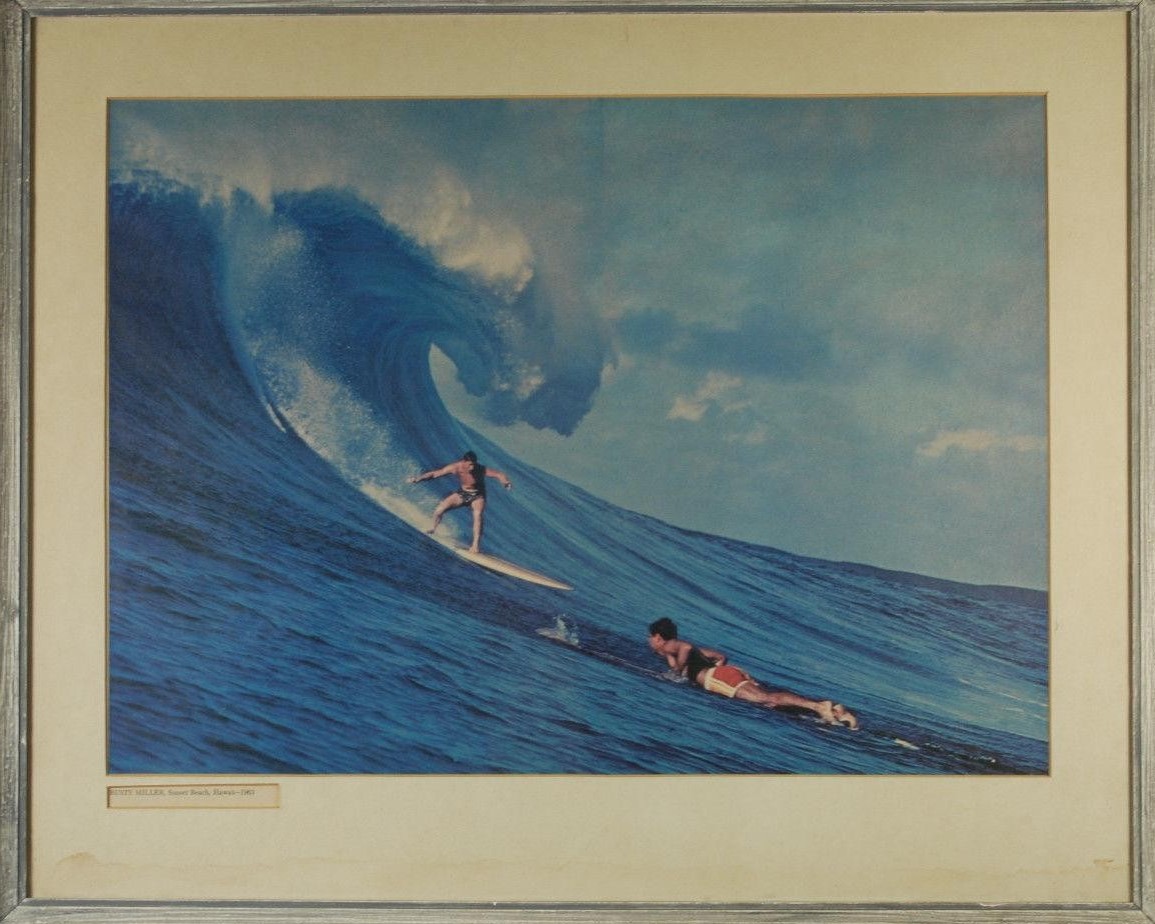
Image: Item Rusty Miller-Miki Dora 1963 Sunset Beach, Vintage Surfing Print
I had a fantastic surf – all the people who were the known legends of surfing were out that day. I actually got to meet them – I surfed it really well on my first day out there, so much so that Jeff Hakman, who was considered ‘Mr. Sunset’, came around to my house, knocked on my door and wanted to look at my boards. That was my first day. He and I became great friends thereafter.
Gordon: there’s two other things about Midget. One is he opened up surfing when he won Makaha, a very localised very parochial competition – they didn’t even like Americans winning, it was a very Hawaiian competition. That really put Australian and Australia as well as surfing outside of Hawaii on the roadmap – made it easier for people such as Bruce to go over there. Secondly he opened up surfing to a lot more people than has ever been realised or recognised. If you go down to Palm Beach now about 50% of the surfers on longboards are female – and that was part of what Midget always went on about; ‘everyone is encourage to come out, everyone is entitled to come out and surf - what ca I do to help them?’.
I also look at all the surfboat crews he took through – at Freshwater, Whale Beach, Palm Beach and then Whale Beach again. The girls that rowed with him at Palm Beach still swear he was the best Coach and Sweep they ever had. He motivated them, educated them, was so enthusiastic it was contagious. For him it not just a case of rowing out to the buoy and coming back in. If you talk to Tawnie Reynolds, he motivated her about lifestyle as well – as well as dong the right thing.
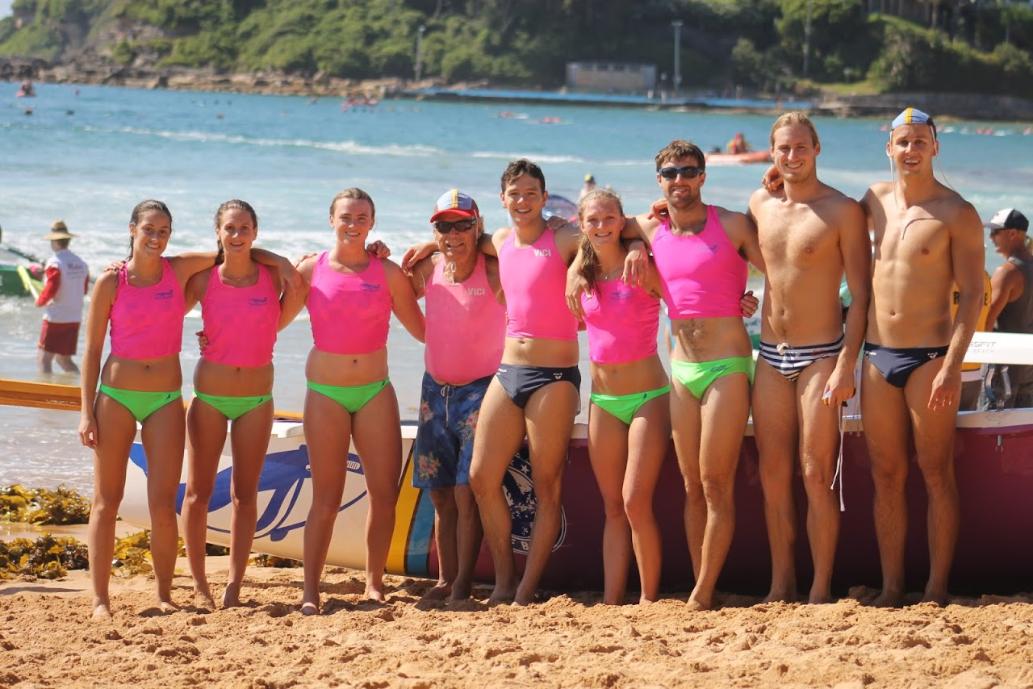
.jpg?timestamp=1471117108932)
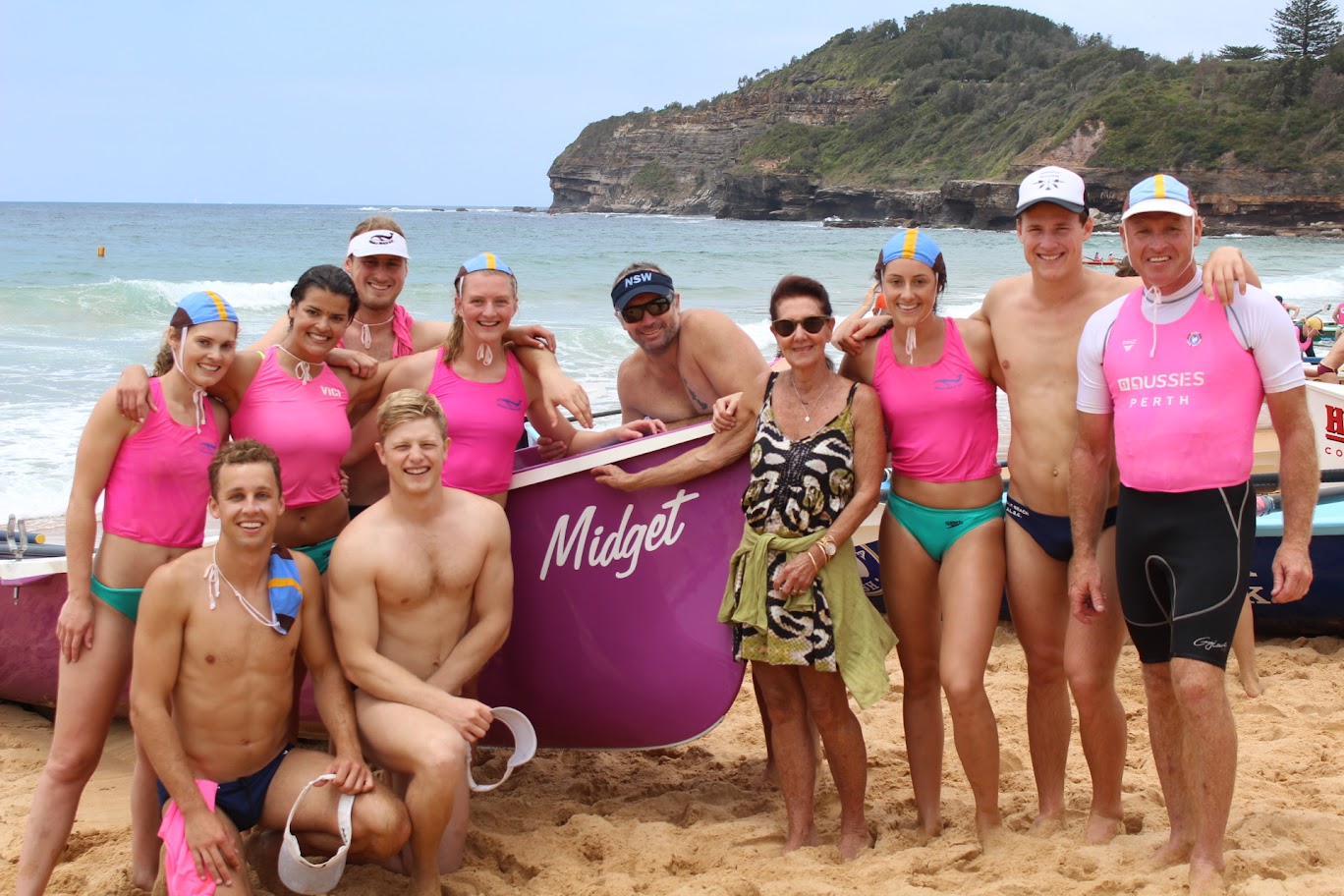
He also had great ideas about surfboat design as well as other watercraft – the Barrenjoey surfboat was one he designed and had built – if you could get on the water or in the water that was for him. You’d see him arrive down at the beach, he’d open up the back of his truck and he’d have 7 boards inside, his blue racing ski on top, along with a bicycle. The question was ‘what am I going to use today?’
As a member of Palm Beach SLSC he was treasured by other members. Shane put on a 50th anniversary of Makaha at the Pacific Club, his point of view on lifestyle was a positive for many, and although we all recognised all he had done for so long, if you made a fuss about that you would embarrass him – he liked to be just one of us.
Every morning I’d get down to the beach he’d always give me a detailed surf report – he was always very particular in what he said, very articulate and informative.
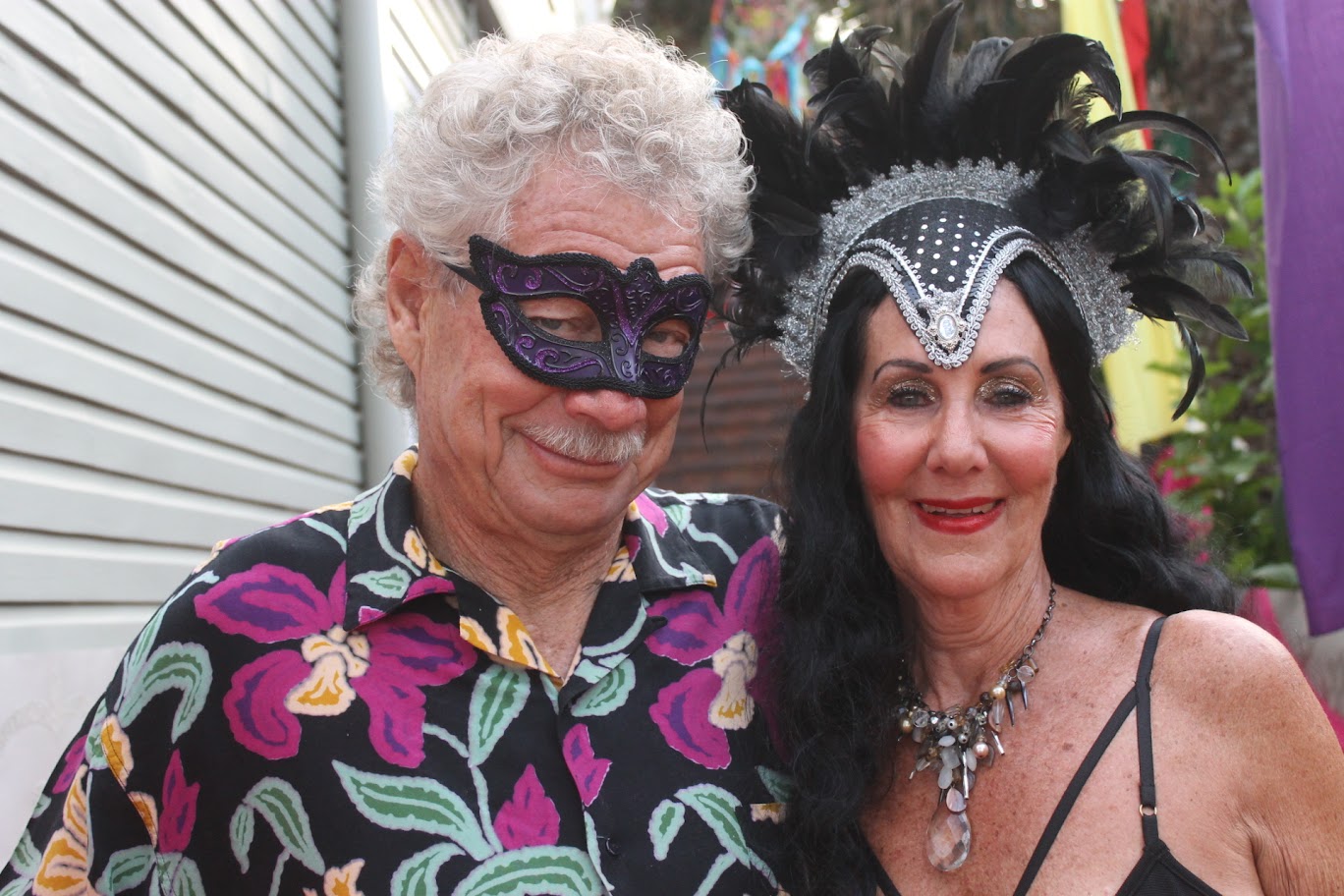
Bernard and Beverlie Farrelly at Palm Beach SLSC 'Rio' fundraiser for the club on January 16th, 2016
Did you have any long conversations with him Bruce?
I didn’t hang out with him as Gordon did. I’d bump into him when he was out having dinner with Beverlie. I remember him picking me up off the side of the road one day down at Collaroy when I was coming home from work and he was too – I was waiting for a bus, didn’t have a car that day. He said ‘if you open the fridge in the back there’s a beer and you can have that on the way home’. I thought that was pretty cool.
My main recollection of him stems from the impression he made on me as a youngster during 1964. Even now when I look at that footage now he was head and shoulders above everyone else.
I said to Beverlie recently, ‘wow, Midget must have really really won that Makaha invitational’. I know what the Hawaiians are like, there’s no easy in on those waves and local breaks – you have to know your stuff and show it. Beverlie said ‘yes, he really really did’.
That was considered the world championship at that time, that was the competition. Then we had the officially named World Championship at Manly, and he won that too – so when you look at that footage you know he really really really won both and was probably a lot better than he was given credit for, even then.
Gordon: and these weren’t flukes. If you look at his history he won titles in the lead into those events and consistently won afterwards. These two wins could be cited as the commencement of a whole industry here.
Bruce: I actually know the people that set up Rip Curl and Piping Hot wetsuits that were all there in 1964. They all went to work soon after then and commenced working on this industry and launched, officially, their own still going companies 5 years later. That kick-started not only their own companies but a surf industry worldwide – from here, from that time.
There is so much stuff about Midget – what an icon he was, what a legend, what he continued to do – but no recognition of that particular time and event and achievement. There are a lot of other people with those attributes and similar achievements – but that moment needs to go up a flagpole so we can acknowledge it.
Gordon: he moved from surfing to skateboarding, he had a TV show, did hang-gliding, had a business that made surf blanks as well as boards – the first board he ever shaped under his own label was shaped at Gonsalves boatshed at Palm Beach, he lived at Palm Beach for 58 years – these contributions have built this industry and continue today. We recently took part in a screening of Morning of the Earth at Cremorne, a 50th anniversary celebration of that film...
Bruce: Albie was there on the big screen being zoomed in from Scotts Head and dedicated that showing that evening to this recognition of Midget. He said that with Morning of the Earth he only ever had one regret was that he didn’t have footage of Midget.
Gordon: everyone we spoke to that night, even youngsters, knew who Midget was. So this is about Midget but it’s also about recognising the First World Champion.
The Midget Farrelly Recognition Committee is one third along in their fundraising goal.
You can become part of this idea yourself by chipping in via that fundraising page: www.gofundme.com/f/midget-farrelly-recognition
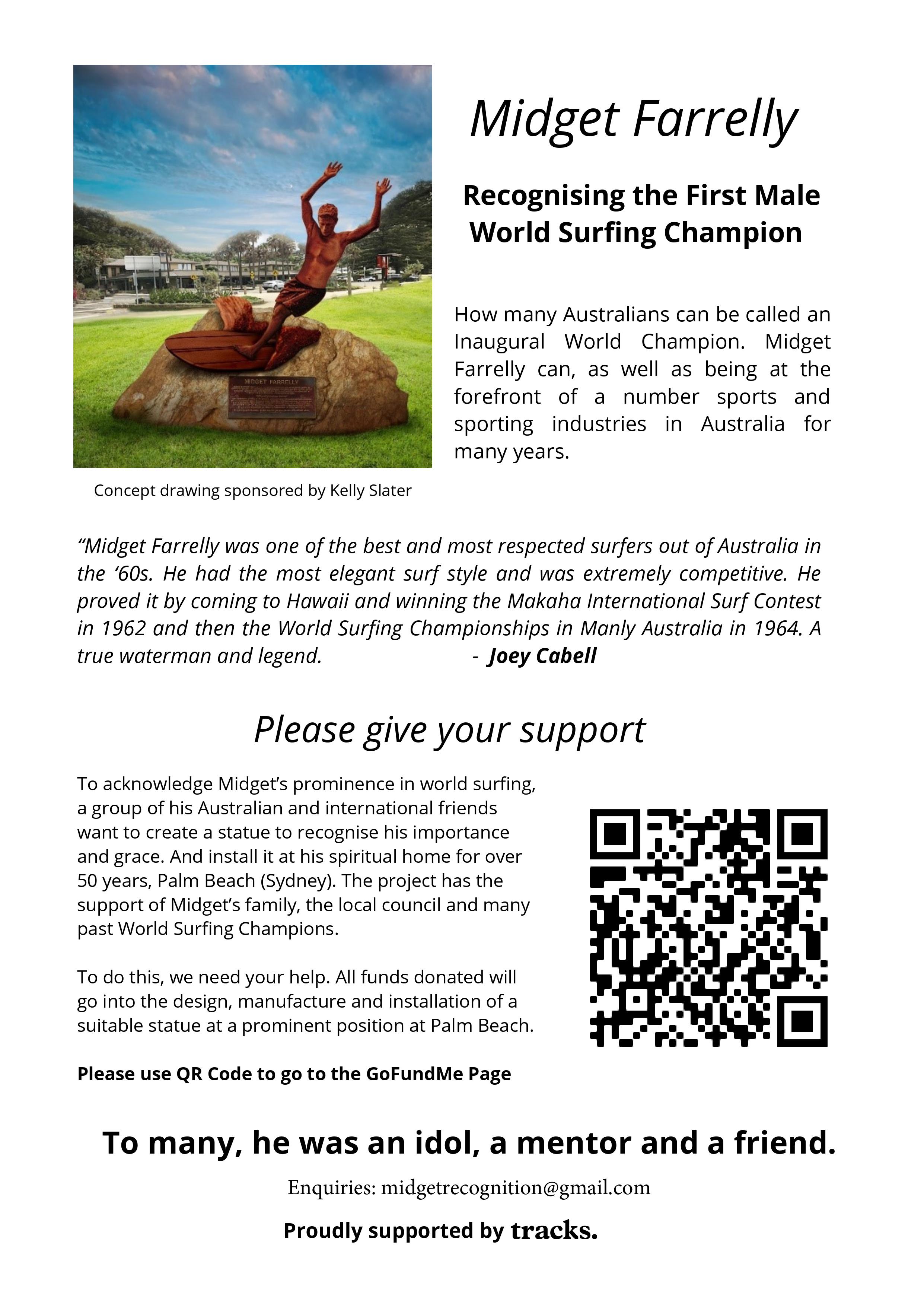
___________________________________________________
Further
Bernard ‘Midget’ Farrelly AM was inducted into the Sport Australia Hall of Fame in 1985 as an Athlete Member for his contribution to the sport of surfing.
‘Midget’ Farrelly’s name became synonymous with board surfing throughout Australia when he won the very first official world championship at Manly in 1964.
Born in Sydney, Farrelly had his first surf experiences at North Bondi beach in the early ’50s. This was the heart of old-style Australian beach culture; the realm of the volunteer lifesaver “surf clubs”, where the country’s few surfers would leave their big wooden boards overnight because they were too heavy to carry home on cars or bikes.
Quickly nicknamed ‘Midget’ for his slight build among the big men of the beaches, a barely teenage Farrelly saw California’s Greg Noll surfing Sydney waves during Da Bull’s lifeguard-sponsored visit in 1956, and realised that you could ‘corner’ on waves. (The Americans gave many demonstrations at Melbourne beaches during that Olympic year and subsequently launched the surf boom.) By 1961, the Malibu-style lightweight boards were being churned out and Farrelly was the Australian surfing champion. In 1962, he went to Hawaii and won the Makaha International championship in 6-foot surf, using a quick, light-footed surfing style, surprising the Hawaiians and Americans by becoming the first ‘outsider’ to win the event.
SURFBOARD WIN TO AUSTRALIAN HONOLULU,
Wednesday (A.A.P.-Reuter)
Australian surfer, Bernard Farrelly of Sydney won the world surfboard riding title to-day. He captured the championship from nine of the most experienced surfers in the world at the end of an exciting international tournament at the famed Makaha Beach in Hawaii. Experts who watched the final said Farrelly won because the conditions suited him better than the other finalists, who were all from Hawaii or California. The finalists had to wait two days until tournament officials decided the waves were good enough to make surfing possible. Farrelly showed remarkable control in his series of rides, building up his points tally, based on the length of ride and form displayed in catching a wave. SURFBOARD WIN TO AUSTRALIAN (1963, January 3 - Thursday). The Canberra Times (ACT : 1926 - 1995), p. 20. Retrieved from http://nla.gov.au/nla.news-article104254829
By 1964 the International Surfing Federation had pulled together the world’s surfing nations to stage a first-ever World Surfing Championships. The venue was Manly Beach on Sydney’s north side. At the time, Australia was hardly the epicentre of surfing but 60,000 people lined the Manly shores to watch Farrelly take the men’s crown ahead of surfers such as Joey Cabell and Mike Doyle. Prior to the championship, Farrelly had won the Australian title. A sensational stylist, Farrelly was considered unbeatable at his peak in medium surfs but could match the world’s best in any conditions.
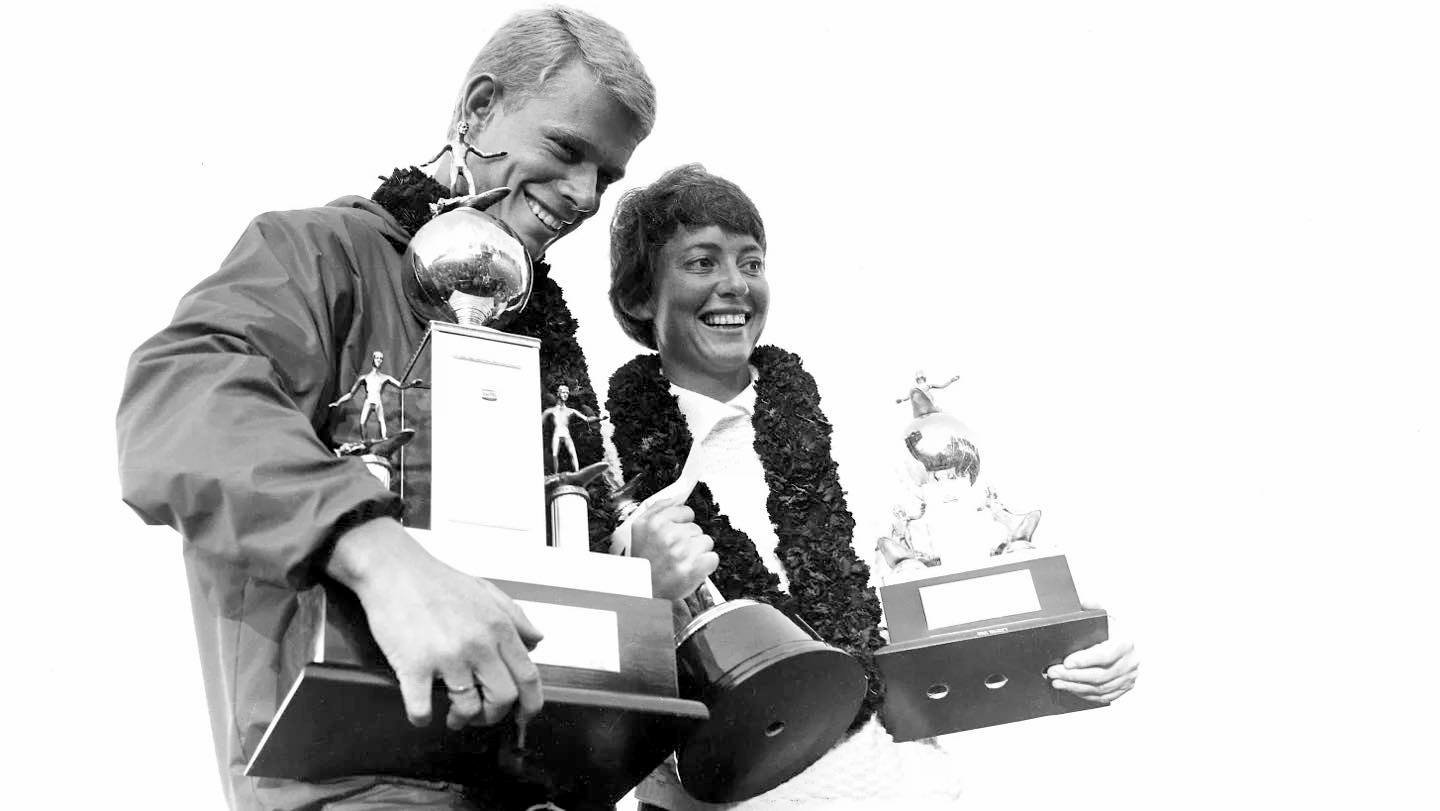
Winners Midget Farrelly and Phyllis O'Donnell with their trophies.CREDIT R.L. Stewart
Farrelly was arguably the most successful competitor in the world during the 60s, he won the Australian title again in 1965, finished sixth at the 1966 world championships, and lost on a count-back to Fred Hemmings in the 1968 world championship at Puerto Rico to be placed 2nd. In 1966 he also won the Peruvian International Small Waves competition and in 1968 won the Bobby Brown Memorial.
Though always dedicated to the sport, he later became embroiled in a series of disagreements with Australian officials and was banned from entering the 1969 Australian title. He finished second at the 1970 world championships.
He set his own path through the ’70s and much of the ’80s, building a successful blank-making and chemicals business (Surfblanks), getting into alternative sports (he once broke his ankle hang gliding and is a highly skilled sailboarder), keeping a low personal profile, yet always being in the water on the bigger days at North Avalon and other breaks near his Palm Beach home. He learned to shape surfboards and produced two books – ‘A Surfing Life’ and ‘How to Surf ‘.
Midget still ran Surfblanks and spent more time in the water than ever before passing away on August 8th 2016. His public profile remained very low until, inspired by some of the new generation of Australian pro surfers, he began appearing at events and surfing in the legends displays that accompanied some Aussie pro events in the late ’80s. At the 1999 Noosa (Queensland) Surfing Festival, he re-won his 1964 crown in a replay of that event’s final heat.
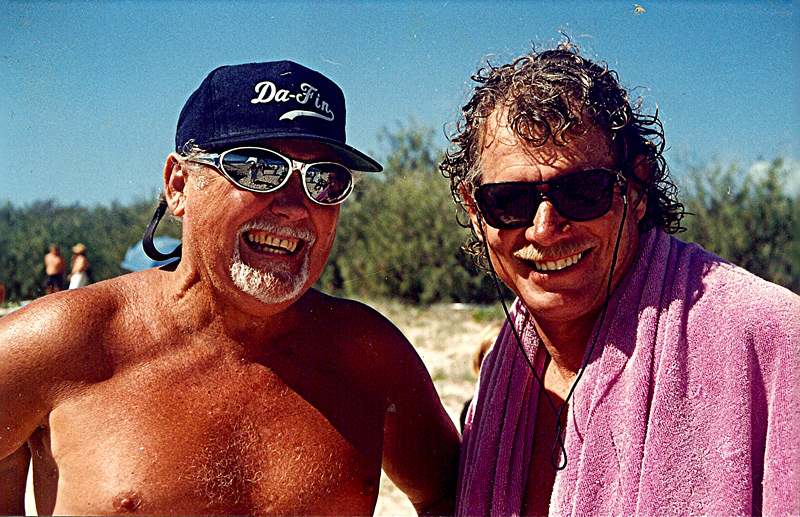
Scott Dillon with Bernard Midget Farrelly at the 64 world titles re-enactment in Noosa. Photo courtesy Ron Turton
Honours & Achievements
2017: Posthumously made a Member of the Order of Australia (AM) for his contribution to surfing
More in:
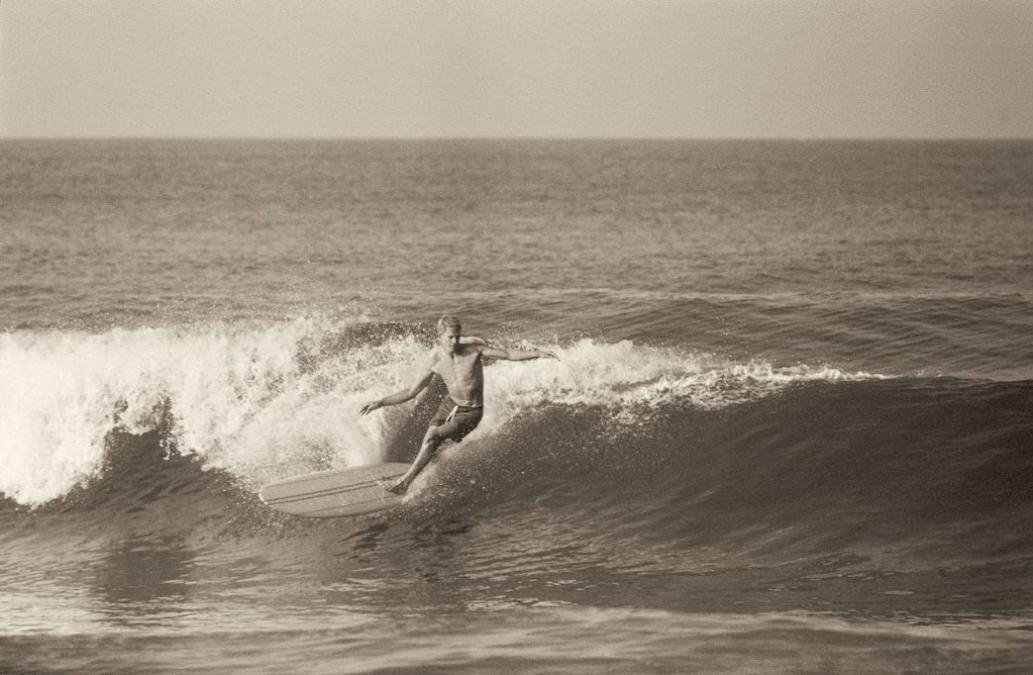
.jpg?timestamp=1658010237874)
.jpg?timestamp=1658010260801)
.jpg?timestamp=1658010281069)
.jpg?timestamp=1658010305125)
.jpg?timestamp=1658010336267)
.jpg?timestamp=1658010360326)
.jpg?timestamp=1658010383706)
.jpg?timestamp=1658010408984)
.jpg?timestamp=1658010473941)
.jpg?timestamp=1658010500646)
.jpg?timestamp=1658010526098)
.jpg?timestamp=1658010557597)
.jpg?timestamp=1658010583414)
.jpg?timestamp=1658010615447)
.jpg?timestamp=1658010650129)
.jpg?timestamp=1658010685947)
.jpg?timestamp=1658010715992)
.jpg?timestamp=1658010744087)
